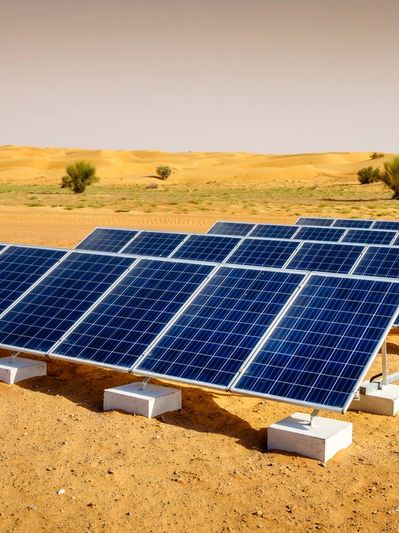Feasibility Studies
Technical, Economic and Environmental Influencing Factors
To evaluate and justify the installation of solar panels in an industrial plant, all the technical, economic and environmental influencing factors must be carefully examined. Below, 15 key items are listed with full prioritization and explanation:
1. Factory energy needs
First, the annual electricity consumption of the plant and the energy consumption pattern (peak hours and the need for stable electricity) must be determined. Also, the need for energy storage (battery) to provide energy during non-sunny hours or during power outages must be examined.
2. Price of energy purchased from the grid
The current cost of purchasing electricity from the grid (per kilowatt-hour) and its forecast increase in future years due to inflation or changes in energy policies must be included in the calculations.
3. Price of undistributed energy (cost of power outage)
In the event of a power outage, the amount of damage to the plant's production and the opportunity cost lost must be calculated. Solar panels can be a solution to reduce these losses.
4. Annual inflation in the country
Inflation has a direct impact on operating costs, replacement equipment, and electricity price increases. This factor is of great importance in the analysis of return on investment and net present value (NPV).
5. Bank interest rate and financing
If the investment is made through a loan, the interest rate, repayment period, and its impact on the factory's cash flow are examined. The possibility of using government facilities or green loans with lower interest rates should also be considered.
6. Installation area and location
The available space for installing panels (roof, ground, or other parts) and physical factors such as orientation, installation angle, and shading from surrounding obstacles are among the most important factors in the efficiency of a solar system.
7. Area solar radiation
The amount of solar radiation in the area, the number of sunny days per year, and the impact of environmental factors (such as dust and rainfall) determine the energy efficiency of a solar system.
8. Technical infrastructure of the plant
The existing infrastructure for installing and connecting the solar system is reviewed, including the compatibility of the power grid, the power capacity of the plant, and the strength of the structures to support the weight of the panels.
9. Initial investment costs (CAPEX)
The initial costs, including the purchase of equipment (panels, inverters, batteries) and the installation of the system, are calculated. This cost forms a large part of the decision-making.
10. Operating and Maintenance Expenses (OPEX)
The annual costs of maintenance, repairs, and servicing the equipment are included in the long-term analysis of the solar system.
11. Annual Depreciation Rate of the Solar System
The efficiency of the solar system decreases over time (typically 0.5% to 1% per year). The useful life of the panels (25 years) and ancillary equipment such as inverters (10-15 years) should also be included in the calculations.
12. Financial Analysis and Investment Indicators
Financial indicators such as the Rate of Return on Investment (IRR), Payback Period, and Net Present Value (NPV) are examined to assess the profitability of the project, taking into account inflation and bank interest rates.
13. Panel Technology and Quality
Choosing the type of solar panel (monocrystalline, polycrystalline, or thin film) and examining efficiency, lifespan, warranty, and environmental compatibility are important.
14. Laws and Permits
Required permits must be obtained to install the solar system, connect to the power grid, and comply with safety and environmental standards.
15. Environmental Impact and Sustainability
Reducing greenhouse gas emissions and meeting the plant’s environmental goals are key benefits of a solar system.
By analysing all of these factors and combining them into a comprehensive financial and technical model, the project’s feasibility can be assessed. A successful project will be one that is not only technically and environmentally sustainable, but also returns its investment within a reasonable timeframe and has a positive impact on the plant’s economic performance.

Copyright © 2025 Solar Parto Tech - All Rights Reserved.